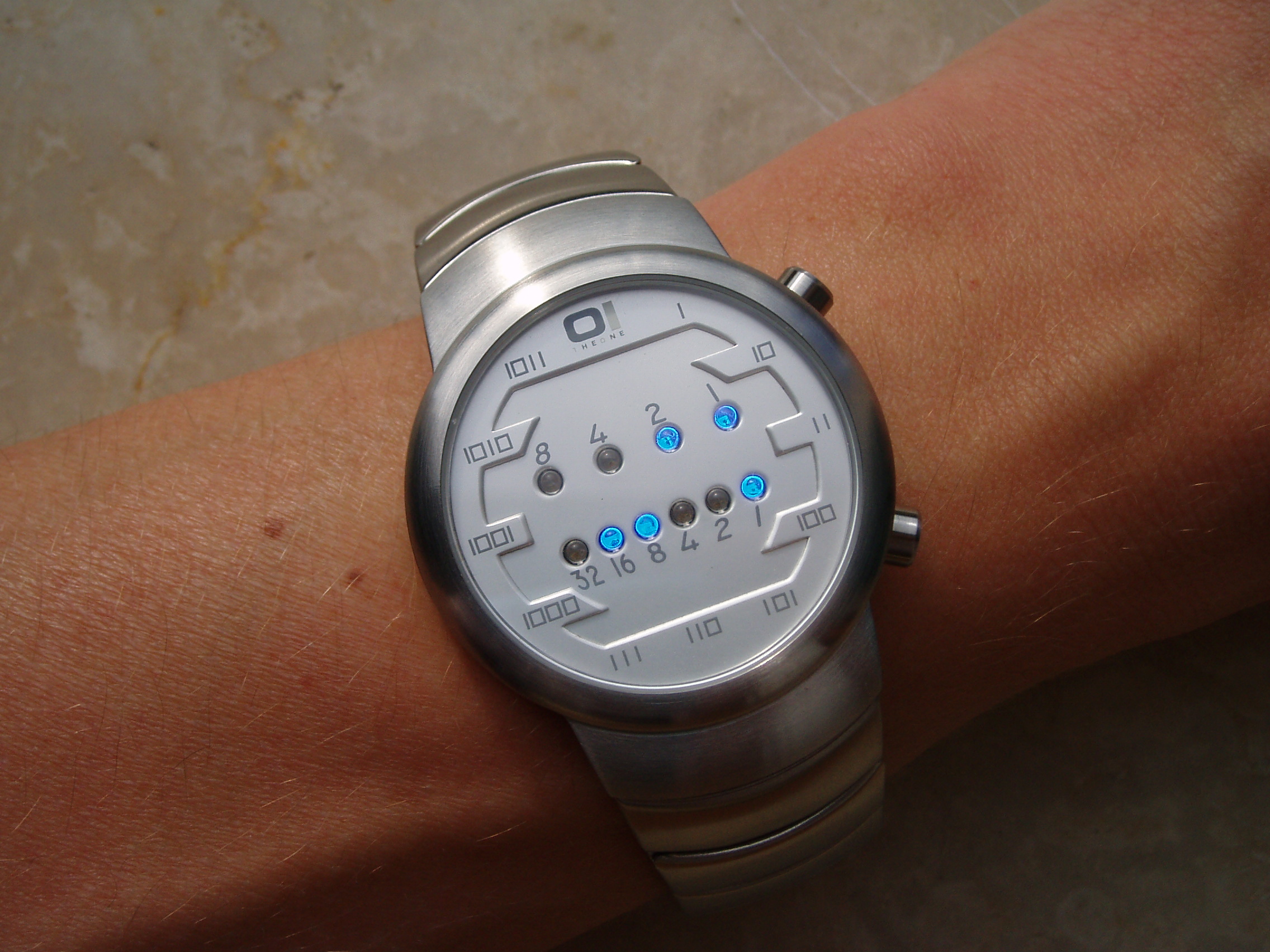401. Binary Watch
Description
A binary watch has 4 LEDs on the top which represent the hours (0-11), and the 6 LEDs on the bottom represent the minutes (0-59).
Each LED represents a zero or one, with the least significant bit on the right.
 For example, the above binary watch reads "3:25".
For example, the above binary watch reads "3:25".
Given a non-negative integer n which represents the number of LEDs that are currently on, return all possible times the watch could represent.
Example:
Input: n = 1
Return: ["1:00", "2:00", "4:00", "8:00", "0:01", "0:02", "0:04", "0:08", "0:16", "0:32"]
Note:
- The order of output does not matter.
- The hour must not contain a leading zero, for example "01:00" is not valid, it should be "1:00".
- The minute must be consist of two digits and may contain a leading zero, for example "10:2" is not valid, it should be "10:02".
Solution
/**
* @param {number} num
* @return {string[]}
*/
var readBinaryWatch = function(num) {
"use strict";
if (num === 0) {
return ["0:00"];
}
let result = [];
let time = [1, 2, 4, 8, 1, 2, 4, 8, 16, 32];
function possibleTimes(idx, depth, hour, min) {
if (idx < 4) {
if (hour+time[idx] > 11) {
return;
}
hour += time[idx];
} else {
if (min+time[idx] > 59) {
return;
}
min += time[idx];
}
if (depth === num) {
if (min.toString().length === 1) {
result.push(`${hour}:0${min}`);
} else {
result.push(`${hour}:${min}`);
}
return;
}
for (let i = idx+1; i < time.length; i++) {
possibleTimes(i, depth+1, hour, min);
}
}
for (let i = 0; i < time.length; i++) {
possibleTimes(i, 1, 0, 0);
}
return result;
};